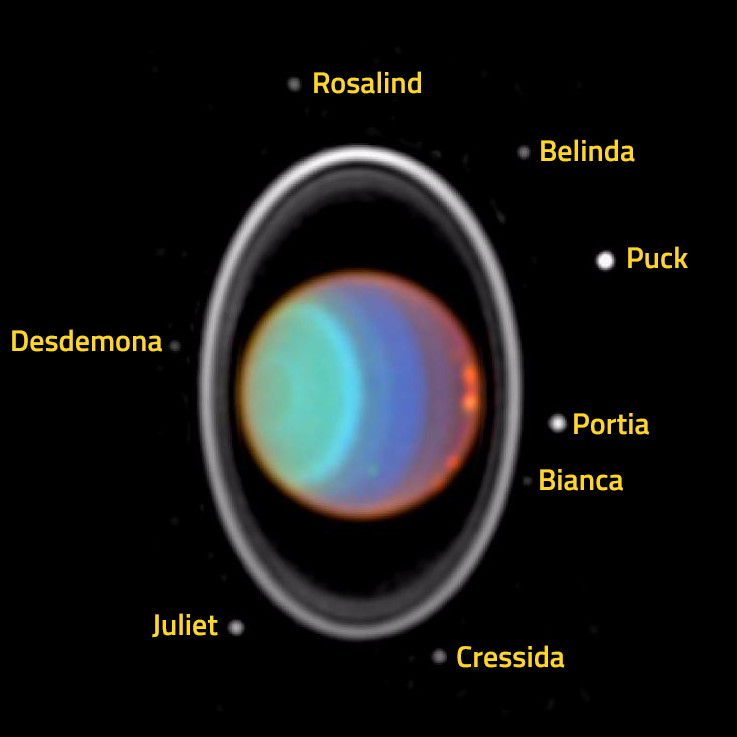Belinda, a moon of Uranus

Image of Uranus in infrared from Hubble Space Telescope. Image was taken on 28th July 1997, capturing clouds in the atmosphere of Uranus, its rings and 8 of its moons, including Belinda. Image credit: NASA/JPL
46,789 miles
56 miles
Belinda is one of the 27 moons of Uranus. It is the tenth closest moon to orbit the planet, orbiting at an average distance of 75,200 kilometres (46,790 miles). Belinda has a diameter of 90 kilometres (56 miles) and takes 15 hours to complete an orbit of the planet.
Belinda is classed as an inner regular prograde moon of Uranus. It travels around the planet in the same direction of the planet's rotation and is believed to have formed from materials spinning around the planet.
Belinda is a a member of a group of Uranus' moons called the Portia group. The Portia group contains nine moons (Bianca, Cressida, Desdemona, Juliet, Portia, Rosalind, Cupid, Belinda and Perdita) which have similar appearances and characteristics. These moons may have unstable orbits which leads to the possibility that, at some point in the distant future, they could collide with each other, break up into pieces, form rings or crash into Uranus. It is thought that the first two moons in the group to collide with each other would be Belinda and Cupid.
Belinda gets its name from a character in The Rape of the Lock, a poem written by Alexander Pope in 1712. In the poem, a Baron snips a lock of Belinda's hair without her consent. Despite her efforts, she cannot reclaim the lock, which transforms into a constellation of stars.
The poem was based on a similar real-life event that happened between members of the aristocracy and was Alexander's Pope's way of making fun of the seemingly unimportant things. However, even so, the act of cutting off a lock of somebody's hair was and is an inappropriate act, despite it being treated as trivial by Pope.
Overall, three of the moons of Uranus get their names from Alexander Pope's The Rape of the Lock. As well as Belinda, there is a moon called Ariel, a protective spirit in the poem, and Umbriel, a troublesome gnome. All other moons of Uranus are named after characters in the plays of William Shakespeare.





